Basic Gas Sensor
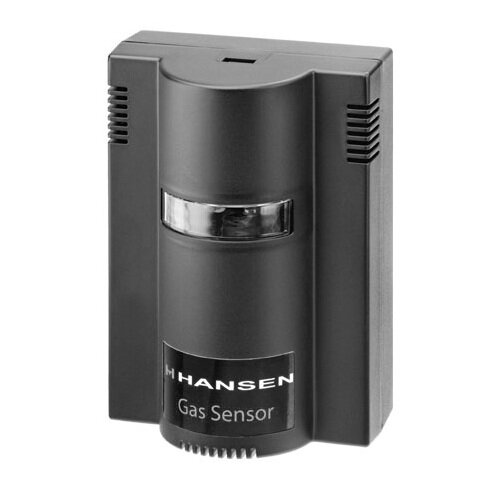
For operating temperatures down to 0ºF (-17ºC). The Basic Gas Sensor model is for commercial applications such as supermarket refrigeration systems and air conditioning chillers.
Enclosure is NEMA1 (IP41) for indoor installations; enclosure is ABS material. Low voltage cable wiring only. (Not available for Ammonia).
Explosion Proof Gas Sensor
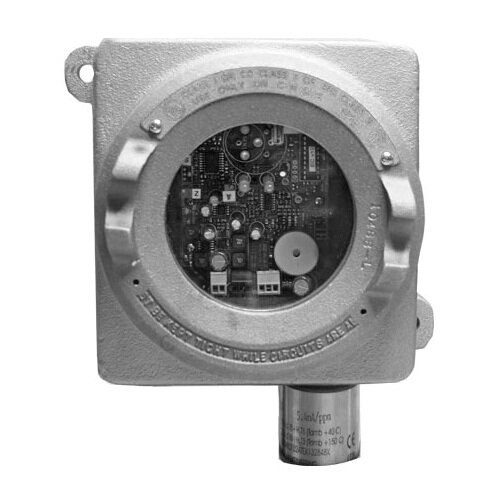
For operating temperatures down to -40ºF (-40ºC). The Explosion Proof Gas Sensor enclosure is NEMA7 Aluminum. Used where regulations and codes specify; consult factory with specific requirements.
Extreme Environment Gas Sensor
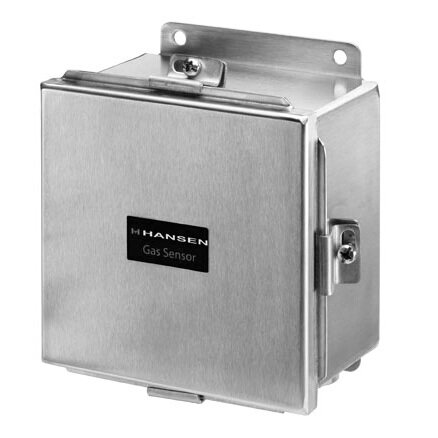
For operating temperatures down to -60ºF (-51ºC). The Extreme Environment sensor features a stainless steel metal enclosure and is equipped with an integral heater and thermostat for low temperature operation.
Enclosure is rated NEMA4X (IP65); conduit connection must be vaporproof.
Note: Auxilliary power required when used with Hansen monitors HLM2 and HLM6.
Vent Line Gas Sensor
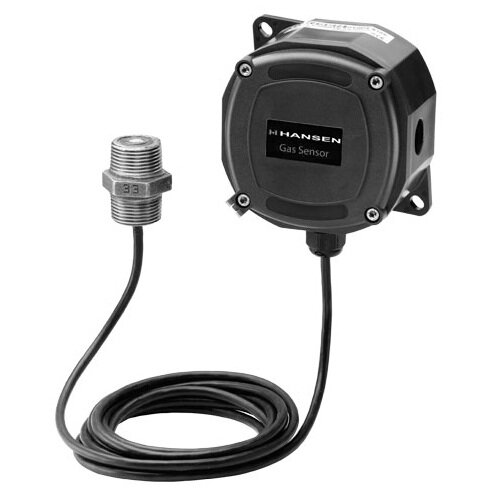
For operating temperatures down to -40ºF (-40ºC). The Vent Line Gas Sensor enclosure is NEMA4 (IP65) ABS material.
Gas sensor element is in a separate carbon steel housing with an 1¼” NPT threaded connection; cable is 10 feet (3 meters).
Harsh Environment Gas Sensor
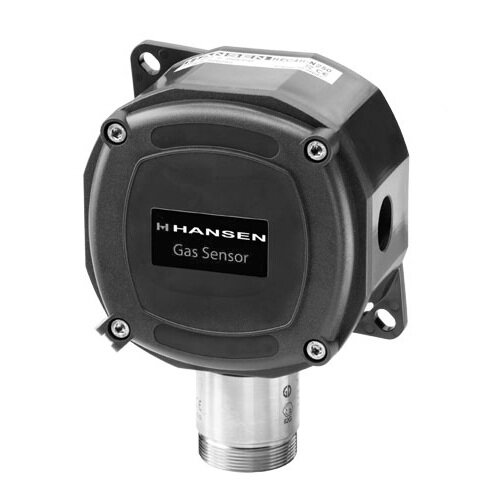
For operating temperatures down to -40ºF (-40ºC) or wet/humid areas. The Harsh Environment enclosure is NEMA4 (IP65) ABS material; conduit connection must be vaporproof.
Standard Gas Sensor
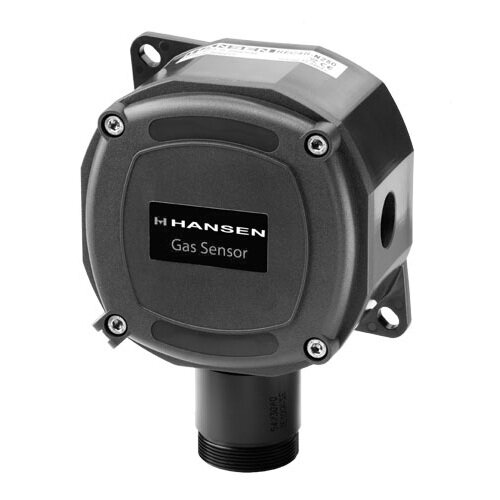
For operating temperature down to 0ºF (-17ºC). The Standard sensor comes in a NEMA4 (IP65) watertight enclosure. Mountable indoors or outdoors (out of direct sunlight).
Enclosure is ABS material with a gasketed ABS cover; single ½” conduit knockout is provided.
HS9B, HS9BW Gas-Powered Solenoid Valve
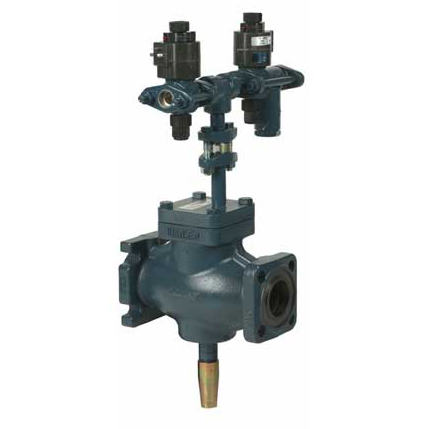
These strong, heavy-duty, gas-powered solenoid valves are designed to control the flow of refrigerant in large commercial and industrial applications.
They require no pressure drop to operate and have no internal bleed to suction.
A dual pilot solenoid valve assembly introduces a high pressure refrigerant source which closes these valves. To open valves, pressure is bled-off back through the low pressure bleed pilot valve and upstream line pressure plus the spring causes the valve to open wide.
HCK5D 2-Step Gas-Powered Suction Stop Valve
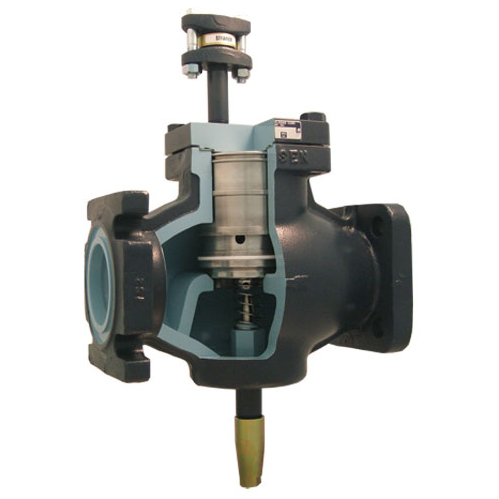
These heavy-duty, flanged, gas-powered, 2-step suction stop valves are designed to control the flow of refrigerant in large industrial and commercial refrigeration systems.
They remain normally open via a spring and require no pressure drop to operate. A single pilot solenoid valve is required to control a higher pressure refrigerant gas which closes these valves during defrosting.
The HCK5D valve has an internal, controlled bleed-down (equalize) feature which will not allow the main seat to open until the pressure across the valve is at a lower, safer pressure differential. This eliminates the need for a separate bleed-down solenoid valve, greatly simplifying piping and reducing installed costs.
If a loss of power occurs during defrost, evaporator pressure is utilized to keep the main valve seat closed until bleed-down is complete.
HCK5 Gas-Powered Suction Stop Valve
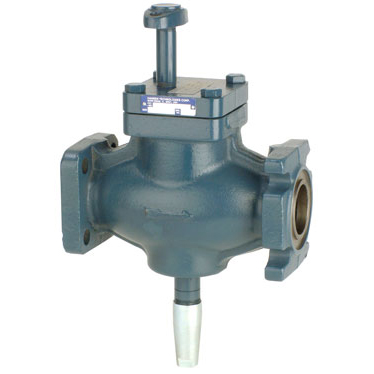
These heavy-duty, durable, ductile iron or cast steel body, gas-powered suction stop valves are designed to control the flow of refrigerant in large industrial and commercial applications.
They remain normally open via a spring and require no pressure drop to operate. A single pilot solenoid valve is required to control a higher pressure refrigerant gas which closes these valves during evaporator defrosting.
If an electrical power failure occurs during the hot gas step of a defrost cycle, the auxiliary pressure pilot valve will keep main valve seat closed until pressure inside evaporator is reduced to the pressure setting on the pilot.
HCK2 Gas-Powered Suction Stop Valve
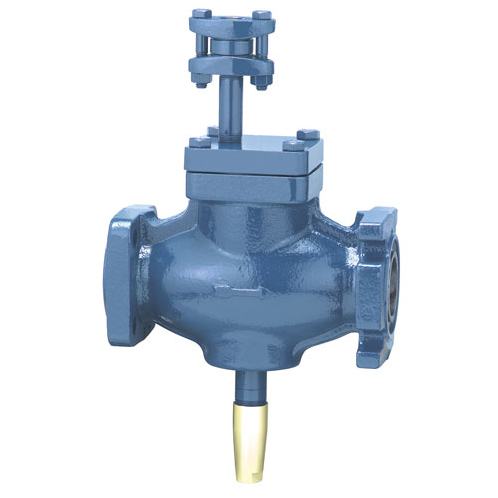
These heavy-duty, flanged, gas-powered suction stop valves are designed to control the flow of refrigerant in large industrial and commercial applications.
They remain normally open via a spring and require no pressure drop to operate. Valves are normally installed on their side for better conveyance of liquid overfeed or oil and to avoid trapping.
A single pilot solenoid valve is required to control a higher pressure refrigerant gas which closes these valves during defrosting.
